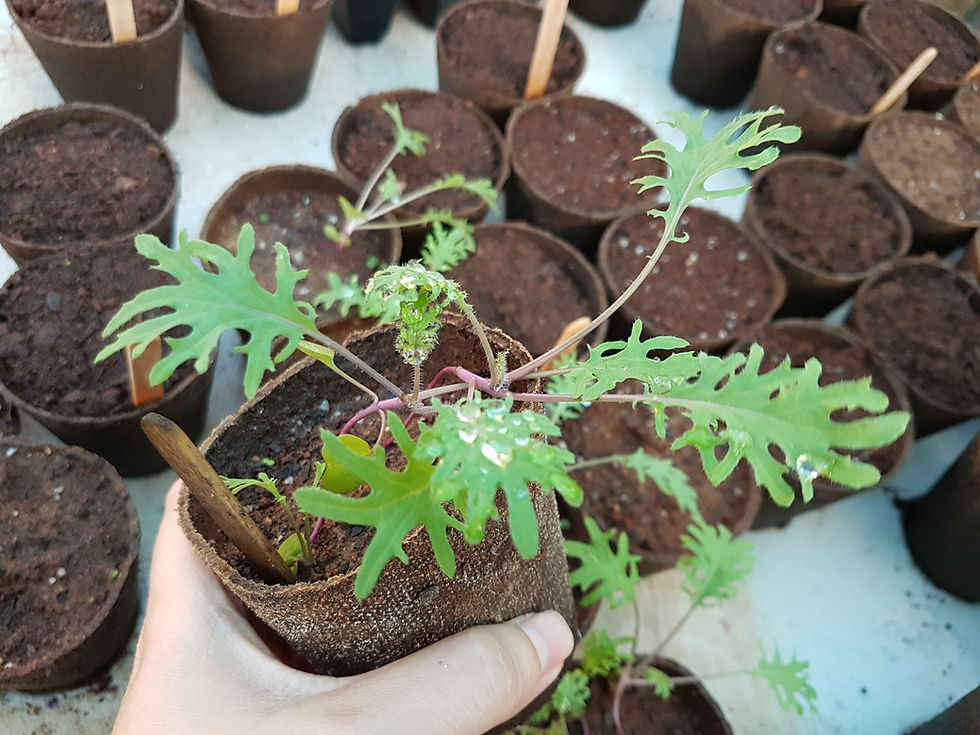1 Organic Kale Red Russian Plant in a 80mm biodegradable peat pot.
This plant is grown from Certified Organic Kale Seed, potted in Organic Mineralised Nutrient Rich (Blood bone and fish free (vg)) Soil, Fertilised with Compost (vg), Worm castings (poop) and Kelp Powder (read more about the soil).
The pot reduces plastic waste and transplant shock (I commit to zero waste where I can, everything is recycled or reused or upcycled). There is no transplanting required, plant directly into the soil in its pot.
Plant in 60% shade.
Kale Red Russian
Blue green leaves tinged reddish and with purplish-red veins, tender sweet and mild flavour, use in salads when small, excellent boiled greens, known since 1885, vigorous plants 45-90cm, hardy to -10°C.
Kale and collards are hardy biennials that will overwinter in milder climates, and improve in flavor with the onset of cold weather. They are in the Brassicaceae family, sharing species name Brassica oleracea with cauliflower, cabbage, broccoli, brussels sprouts, and kohlrabi.
Siberian or Russian – Flat leaves with lobed edges. Most tender.
Kale and Collards thrive in well drained fertile soil high in organic matter, with pH 6.0- 7.5. They can tolerate slightly alkaline soil. A general guideline is 2-3 lbs of 8-16-16 fertilizer over 100 sq ft of garden area two weeks before planting. If boron is not present in your soils, consider adding 1 Tbs per 100 sq ft.
Harvest full size leaves when desired. Kale flavor sweetens after light frosts. Kale and collards are both very cold hardy, overwintering in most climates to some degree. Cool leaves in cold water at harvest and store in plastic in fridge. In late fall, cut the heart of the plant and store just above freezing in a plastic bag for a few weeks.
Kale and collards do not usually suffer too much from pest damage, but they are subject to the same insect pests as cabbage, cauliflower, and broccoli. Insect pests, including cabbage looper, imported cabbage worm, and diamondback moth are largely of the Lepidoptera order and can thus be controlled by Bacillus thuringiensis (such as Dipel DF) and/or spinosad, preferentially in rotation with one another to prevent build-up of resistant individuals. Flea beetles chew small holes in the leaves and are most detrimental when plants are young; use row cover (make sure edges are sealed) or application of Pyganic™, neem or capsaicin products to control populations.
